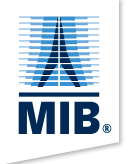Floating storage and regasification units
Floating Storage and Regasification units are a fast track LNG import solutions.
The growing availability of liquefied natural gas (LNG) is providing many coastal nations with access to the least carbon-intensive hydrocarbon. Floating storage and regasification unit terminals play a key role in the LNG value chain, forming the interface between LNG carriers and the local gas supply infrastructure. They are versatile, convenient and can make natural gas available to the market faster than land-based installations.
FSRU terminals may be deployed in remote locations and are typically subject to a range of technical challenges as the interface between maritime and onshore infrastructure. The off taken natural gas is sent to the local distribution gas network and flows from the ship at very high pressure, typically in the range from 80 barg to 120 barg, if not more.
Everyone can appreciate the criticality of safeguarding workers, environment and the asset itself in such a challenging application in case of emergency happening at the terminal and requiring the ship to quickly disconnect from the jetty and move off station. MIB’s Integrated Emergency Disconnect System (EDS) that ensures positive shut-off at high and low pressure, thanks to double ball valves with spring and pressure energised seat assemblies is the most reliable solution used by Operators around the world to serve this application.
MIB can provide a full, integrated engineered package including:
- Emergency Disconnect Systems (EDS) c/w hydraulic power and control pack;
- High Pressure Jumper Hoses;
- Jetty Support Tower for Jumper Hoses c/w Retaining Sling;
- Electro-hydraulic aerial umbilical;
The following advantages of the jumper hose system transfer versus other traditional installations are identified:
- Optimisation of CAPEX investment;
- Significant reduction in weight. This will positively reflect on the jetty construction/modification itself;
- No major jetty modifications or special foundations are required;
- Significant reduction in costs and time for installation. Unlikely for the need for floating cranes, heavy lifting gear, etc.;
- No need for scaffolding or removal of the equipment to an off-site area for servicing; hence reduced down time;
- Reduced number of potential leak paths;
- Lower overall shipping cost to site. The jetty tower is suitable to be containerized and as an alternative, could be also built locally;
- The hose system does not involve any requirement for hydraulic power, except for the ERS which in any case requires hydraulic power only in case of an emergency release;
- The hoses and the jetty structure do not require any maintenance during normal operation and eliminates the need for any moving part such as swivels, bearings, hydraulic cylinders, etc. normally associated with other types of transfer solutions;
- The lead time for a complete system is significantly low; this being particularly important for many FSRU projects which are often fast-track and so time-driven;
- Reduction in OPEX cost for spare parts and intervention activities;
- Part of the scope (integration of the ERS with relevant power and control system) is typically installed at the vessel conversion stage (e.g. at shipyards), thus reducing further the activities to be held at site when the FSRU arrives.
To system will suit the vessel motions and ensure safe transfer within the required drift operational envelope.
